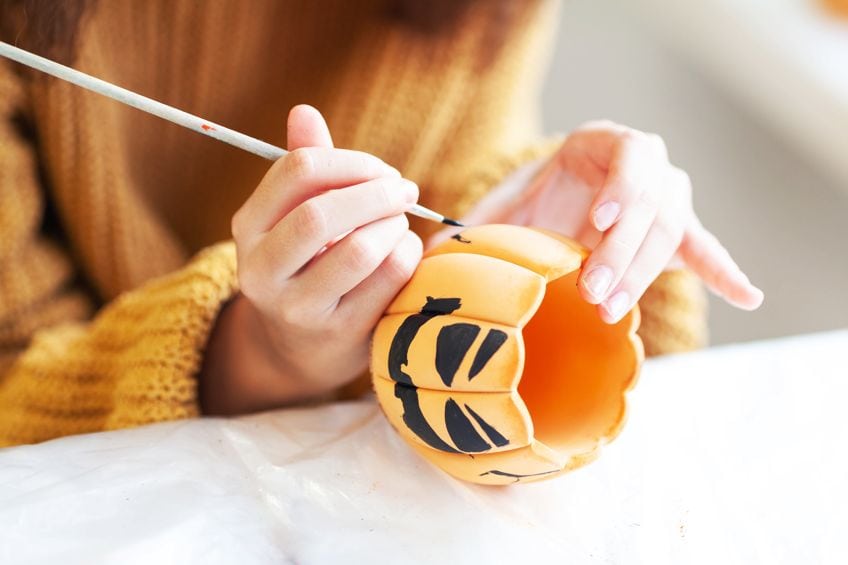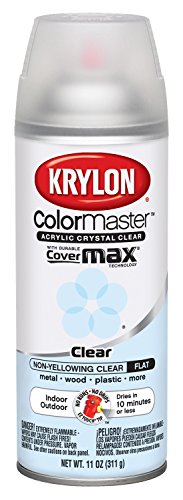Acrylic Paint on Plastic – Tips for Coating Polymers
Plastic items are part of our daily lives, from containers to cups, pitchers to plates, and are common to most households. And if yours is a household with kids, you will know that even the most hard-wearing of plastic items start to look shabby after a while. But instead of throwing them in the trash and buying replacements, you can breathe new life into them by painting them. In this article, we are going to discuss painting plastic with acrylic paint, and talk about the best acrylic paint for plastic.
Table of Contents
- 1 Can You Use Acrylic Paint on Plastic?
- 2 Painting Plastic with Acrylic Paint
- 3 Our Top Tips For Painting Plastic with Acrylic Paint
- 4 Frequently Asked Questions
Can You Use Acrylic Paint on Plastic?
Acrylic paint is a wonderful medium that has all the advantages of oil paints and none of the disadvantages. The colors are vibrant, the consistency is thick and smooth, and you can paint in layers just as you would with oil paints. Not only that, but acrylic paints are also available in spray cans which makes your painting job even easier than if you had to use brushes and tubes of paint. But any hobbyist or crafter worth her salt knows that plastic is notoriously difficult to paint. Paint does not adhere easily to the plastic surface because plastic is smooth and non-porous. Right now you are probably asking yourself, “So, will acrylic paint stick to plastic?”
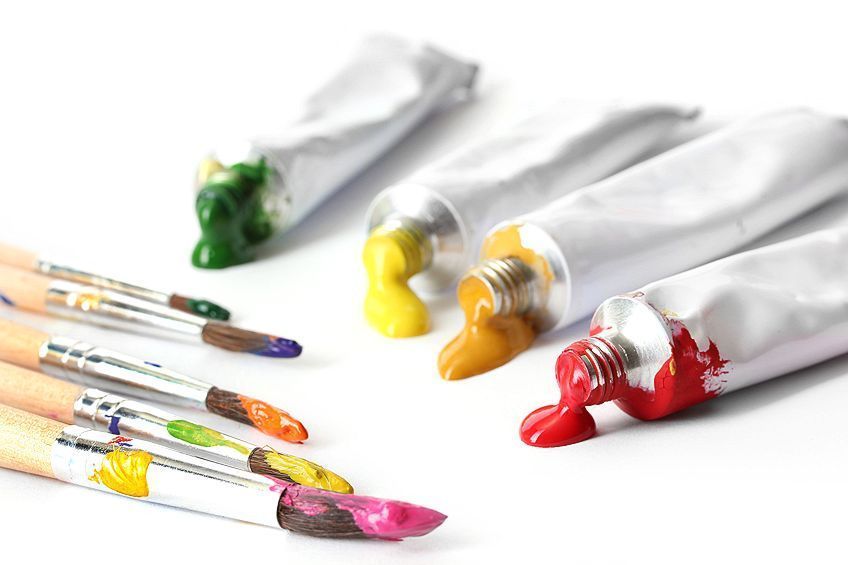
The answer is no, not if you want to start painting straight away. Unfortunately, the process is not quite as easy as just dipping your brush in paint and starting to paint. There are certain preparations you need to make before you can start painting, but you should not let that put you off. It is not a lengthy or complicated process, nor is it expensive. That being said, there are a few types of plastic that cannot be painted even if you prepare them beforehand. Nothing made of polypropylene can be painted. If you are not sure what polypropylene is, look for the recycling logo, a triangle with the number 5 in the middle of it.
There are other polypropylene items that have different numbers, and these numbers determine whether the plastic can be painted with acrylic paint or not.
Items numbered 1, 3, 6, and 7 are not polypropylene and therefore can be painted, while polypropylene items 2, 4, and 5 cannot. Some examples of the items you can paint include flower pots, kids’ toys, picnic plates, bowls and cups, storage containers, heavy-duty plastic baskets, and even outdoor furniture. Let us have a look now at the preparations you need to make before you can start painting, after which we will discuss acrylic painting on plastic in detail.
Painting Plastic with Acrylic Paint
As we mentioned earlier, because plastic is smooth and non-porous it cannot be painted directly because the paint will not stick to the plastic’s surface. You have to prepare the surface before you can apply a primer or a base coat. The base coat or primer is paint that has been specifically designed for use on plastic surfaces. Then, once you have painted the plastic item you can use a clear sealant to finish the job, although depending on the item you have painted a sealant may not be necessary.

Step 1: Preparing the Plastic Surface
The first step is to clean the item thoroughly, and you can do this just with soap and water. Allow it to dry completely. Once dry, you need to roughen the plastic surface to enable the paint to adhere to it. A piece of sandpaper between 180- and 220-grit is ideal for this purpose.
Having sanded down the plastic item you will need to wipe away all the dust and debris. Use a damp cloth first, then use some rubbing alcohol.
Step 2: Testing the Paint and Primer Compatibility
For the most part, you can safely assume that the primer and paint you are going to use will be compatible with each other. However, some products may be incompatible so it is always a good idea to check beforehand. Here is how you do it.
- Select a plastic item that is the same or similar to the one you are going to paint.
- Apply the primer and let it dry out completely.
- When the primer is dry, you can apply the acrylic paint, then leave it to dry.

- Once the paint has dried, take a kitchen knife and scratch the surface of the plastic item.
- Place a piece of tape over the scratch mark, smooth it down, then pull it off. If the primer and paint are compatible, no paint will come off. If it does, the primer and paint are not compatible.
Step 3: Applying the Primer
There are other paints other than acrylic paint for plastic available on the market that can be applied directly onto the roughened surface of the plastic item without having to apply the primer first. However, acrylic paint on plastic is the best option and for this, you will need to prime the plastic item. Two coats of primer will be sufficient. Primer is available in spray cans and is very easy to apply. It is advisable to work outdoors or, if this is not possible, then in a room that has good ventilation. Be sure to wear a face mask, gloves, and protective eyewear and stand about 20 inches (50 centimeters) away from the item and spray it evenly.
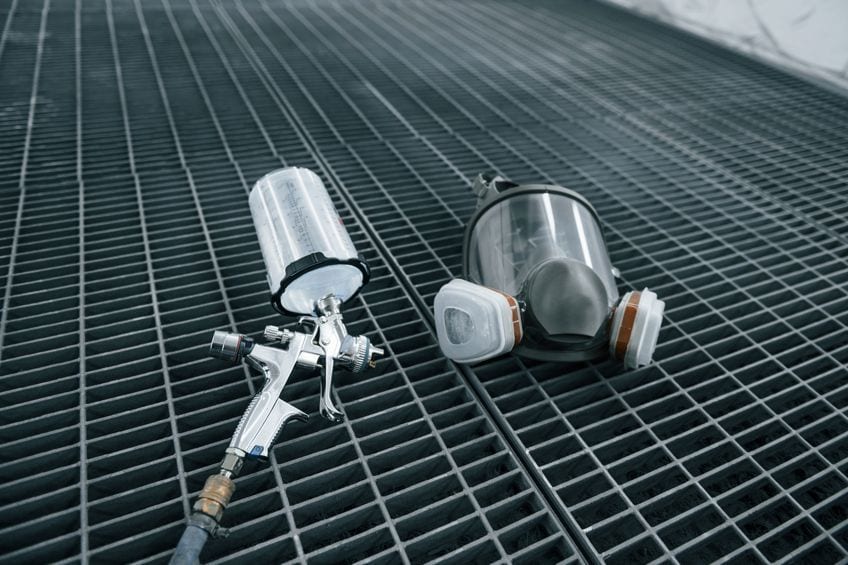
If there are sections of the item that you do not want to paint, you should mask these out using painter’s tape before you start spraying. Allow the item to dry according to the primer’s instructions, or leave it to dry for a few hours. If you would prefer to paint on the primer, this type is also readily available. It is a slower process than spraying the primer, but equally as effective. Apply the primer evenly and let and each layer dry before you apply the next layer.
Follow the primer’s instructions for painting, although the rule of thumb is to apply at least three coats.
The Best Primer for Plastic: KRYLON ColorMaster Primer
Krylon Inc. was established in 1947, and today, some 70 years later, still remains the largest supplier of aerosol paints in the world. That is seven decades of painting expertise! Their ColorMaster range is available in a variety of colors, including a clear aerosol, that can be used on various surfaces including plastic, metal, and wood. It can be used inside or outside, and it dries smoothly and evenly. Besides gloss and matte finishes, Krylon ColorMaster is also available in a satin finish, as well as semi-gloss and semi-flat.
- Suitable for use on many surfaces, including plastic and wood
- Can be used to protect projects inside or outside
- Provides superior coverage and color and dries in 10 minutes
PROS
- Quick and easy coverage
- Does not drip or pool
- Dries within 10 minutes of application
- Can be used indoors and outdoors
- Increases paint adhesion
- Available in a variety of finishes
- Can be used either as paint or as a primer
- Does not yellow over time
CONS
- Emits an odor so a face mask and proper ventilation is a must
- Plastic must be properly prepared before primer can be applied
Step 4: Applying the Paint
Acrylic painting on plastic is a similar process to applying a primer to a plastic item. If there are sections of the item that you do not want to paint, block the sections off using masking tape. If you are working indoors, make sure the room has proper ventilation. It would also be advisable not to have children or pets in the room while you are working. Use a face mask to protect yourself from breathing in paint fumes. We also recommend that you use protective eyewear as well.

Using acrylic paint to paint plastic is easy, particularly if you are using spray paint. Shake the can well before applying the first coat, and remember to stand a few paces away from the plastic item you are going to paint. The best way to paint the item is to apply thin, even layers of paint, and let each layer dry completely before you paint the next layer. You do not want to apply one thick layer. If you are using acrylic paint for plastic that has to be applied with a brush, you will need to ensure that you paint each layer in equal thickness, and also allow each layer to dry. You will find that each layer takes between 10 and 20 minutes to dry.
When you have finished painting the item, you can remove the masking tape then allow the item to stand and dry for at least 24 hours. If you want to add a design or a picture, you can do so once the item has dried completely.
The Best Acrylic Paint for Plastic: KRYLON Colormaxx Spray Paint and Primer
The most popular acrylic paint for plastic is Krylon’s COLORmaxx range that is available in 75 different colors. The paint dries to an attractive and elegant satin finish. The wide variety of colors means that no matter what you are painting, you will be able to find the perfect color. It can be used indoors and outdoors.
- The durable paint delivers premium coverage and superior color
- Can be used on wood, metal, plastic, glass, and ceramic surfaces
- Offers superior adhesion and protection against rust
PROS
- Delivers superior color and optimal coverage
- Provides rust protection
- Dries to the touch in less than 20 minutes
- A 12-ounce can of spray paint covers up to 25 square feet
- Can be used on most plastics as well as wood, metal, wicker, glass, and ceramic
CONS
- Colors may differ slightly from depiction
- May require several coats to achieve premium coverage
- May drip or pool if the paint is applied too thickly
Step 5: Applying a Sealant Over Acrylic Paint on Plastic
Having spent time preparing your plastic item for painting, then applying the paint itself, you will want to finish off the job by sealing it and thus protecting it from bumps and scratches through use. And even if the item is for decorative purposes, you may want to seal the paint just because the sealant will finish off your painting job.
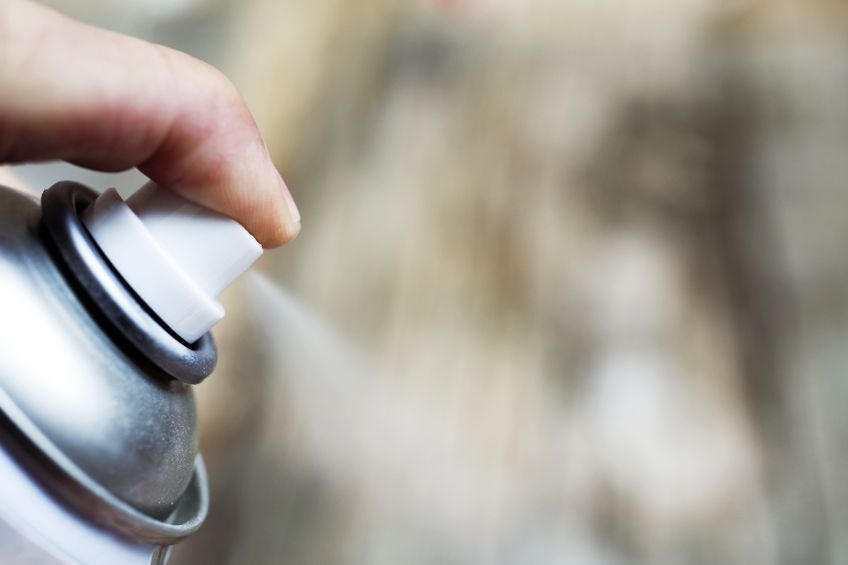
Like primers and paints, sealants are available in a spray format and can be applied in the same way as the primer and paint. You should wait until the paint on your plastic item has dried completely before applying a layer of sealant. If the item is not going to be used on a daily basis, or if it is for decorative purposes only, one layer of sealant should be sufficient.
If, however, the item is outdoors – such as a table or chair – or it is going to be used daily, the second layer of sealant would be advisable.
The Best Sealer For Acrylic Paint: ALEENE’S Acrylic Sealer
Aleene’s Acrylic sealer is the top-selling acrylic sealer on the market. It is very easy to apply and finishes to a clear and smooth consistency that is hard-wearing, durable, and protective. It also complies with federal regulations and does not contain any harmful CFCs.
- The acrylic sealer spray provides a protective and glossy finish
- A durable protective finish dries clearly on any surface
- The spray-on formula can be easily and quickly applied
PROS
- Gives a glossy luster to indoor and outdoor items
- It does not yellow with age
- Easy to apply
- Durable and long-lasting
CONS
- If it is sprayed on too thick it can crack and flake off
- The can is half the size of a can of acrylic paint, 6-oz vs. 12-oz
- Emits a strong odor as well as fumes
- It may take a long time to dry
Our Top Tips For Painting Plastic with Acrylic Paint
In addition to our recommendations for painting plastic, we have a few other tips and tricks up our sleeve to help you to get the best out of your painting project. They are based on our own experience of plastic painting projects so you can be sure that they work!
- Use the best quality painter’s tape that you can afford to tape off areas that you do not want to be painted.
- Ensure the tape has been applied flat so that no paint can seep underneath it.
- After you have finished painting, pull the tape off straight away so that the dried paint does not peel off with the tape.
- You should always use a primer before painting, regardless of whether the item is going to be used or not.

- Depending on the item you are going to be painting, you may wish to use a liquid sander rather than sandpaper as a liquid sander is more gentle.
- Always test your paint to ensure that it is exactly what you want in terms of color and finish.
- To avoid the paint bubbling, make sure that the plastic item is at ambient temperature, that is, not too warm or cold.
Now that you know how to do acrylic painting on plastic, you are sure to find a lot of plastic items that need freshening up. Remember that you do not have to stick to small items such as toys, plastic plant pots, or regular containers. You can also bring your plastic garden furniture to life by painting it. Always remember to check the recycling logo on the plastic item beforehand to ensure that it can in fact be painted. And follow our tips and tricks to get optimum results from your painting project.
Frequently Asked Questions
Will Acrylic Paint Stick to Plastic?
No, not unless the plastic has been prepared by sanding it first, then spraying on a primer. Because plastic is smooth and non-porous, and acrylic paint has a similar consistency when dry, the paint cannot adhere to the plastic. That is why you need to roughen up the surface a little in order to give the paint purchase.
Can I Paint on Any Type of Plastic?
You can paint on all types of plastic except polypropylene. If you look at the recycling logo on the item, you will see there is a number within the logo. If the item is numbered 2, 4, or 5 it means it is made of polypropylene and cannot be painted. Fortunately, there are far more items that can be painted than cannot, including kids’ toys, picnic sets, flower pots, storage containers, garbage bins, and outdoor furniture.
Do I Have to Use a Sealant?
There is no hard and fast rule that stipulates that you have to use a sealant on your item, but it is advisable. Not only does it seal the paint and make it longer-lasting, but it also protects the paint from chips and scratches that may come about through regular use. It is certainly a good idea to apply a sealant to things like kids’ toys, toy bins, and lunch boxes that need to be particularly hard-wearing.
Must the Primer be the Same Color as the Paint?
If you can find primer in exactly the same color as the paint, then by all means go ahead and use it. However, it is unlikely that you are going to find the exact color match in paint and primer, and you do not want to make the mistake of selecting a primer that you think is the same color as the paint only to find that it is darker than the paint. It is therefore advisable to use a clear primer, but if you are concerned that the color of the item will show through the layer of paint you could always use a primer that is lighter in color than your paint.
In 2005, Charlene completed her Wellness Diplomas in Therapeutic Aromatherapy and Reflexology from the International School of Reflexology and Meridian Therapy. She worked for a company offering corporate wellness programs for a couple of years, before opening up her own therapy practice. It was in 2015 that a friend, who was a digital marketer, asked her to join her company as a content creator, and this is where she found her excitement for writing.
Since joining the content writing world, she has gained a lot of experience over the years writing on a diverse selection of topics, from beauty, health, wellness, travel, and more. Due to various circumstances, she had to close her therapy practice and is now a full-time freelance writer. Being a creative person, she could not pass up the opportunity to contribute to the Art in Context team, where is was in her element, writing about a variety of art and craft topics. Contributing articles for over three years now, her knowledge in this area has grown, and she has gotten to explore her creativity and improve her research and writing skills.
Charlene Lewis has been working for artincontext.org since the relaunch in 2020. She is an experienced writer and mainly focuses on the topics of color theory, painting and drawing.
Learn more about Charlene Lewis and the Art in Context Team.
Cite this Article
Charlene, Lewis, “Acrylic Paint on Plastic – Tips for Coating Polymers.” Art in Context. November 29, 2021. URL: https://artincontext.org/acrylic-paint-on-plastic/
Lewis, C. (2021, 29 November). Acrylic Paint on Plastic – Tips for Coating Polymers. Art in Context. https://artincontext.org/acrylic-paint-on-plastic/
Lewis, Charlene. “Acrylic Paint on Plastic – Tips for Coating Polymers.” Art in Context, November 29, 2021. https://artincontext.org/acrylic-paint-on-plastic/.


